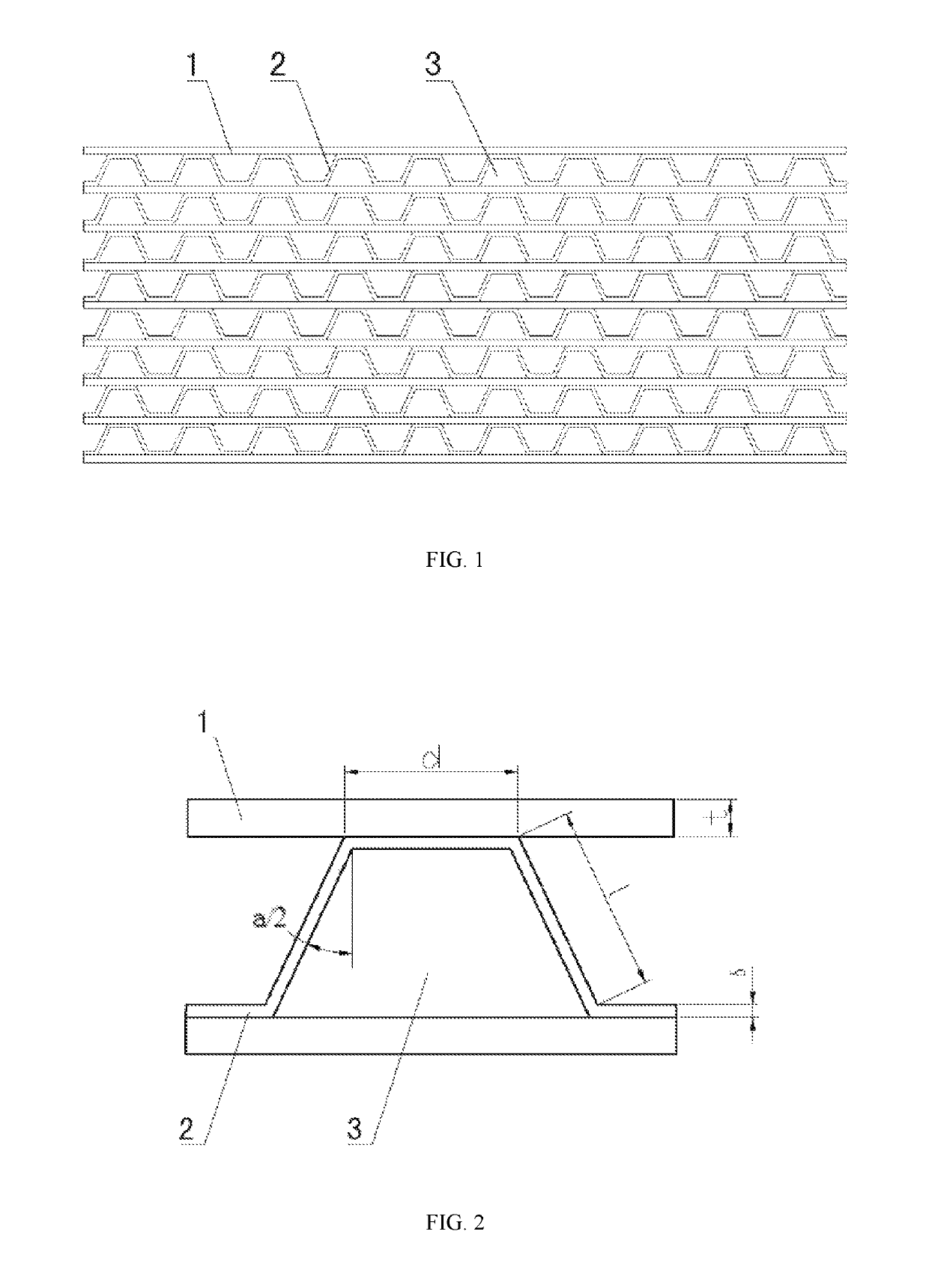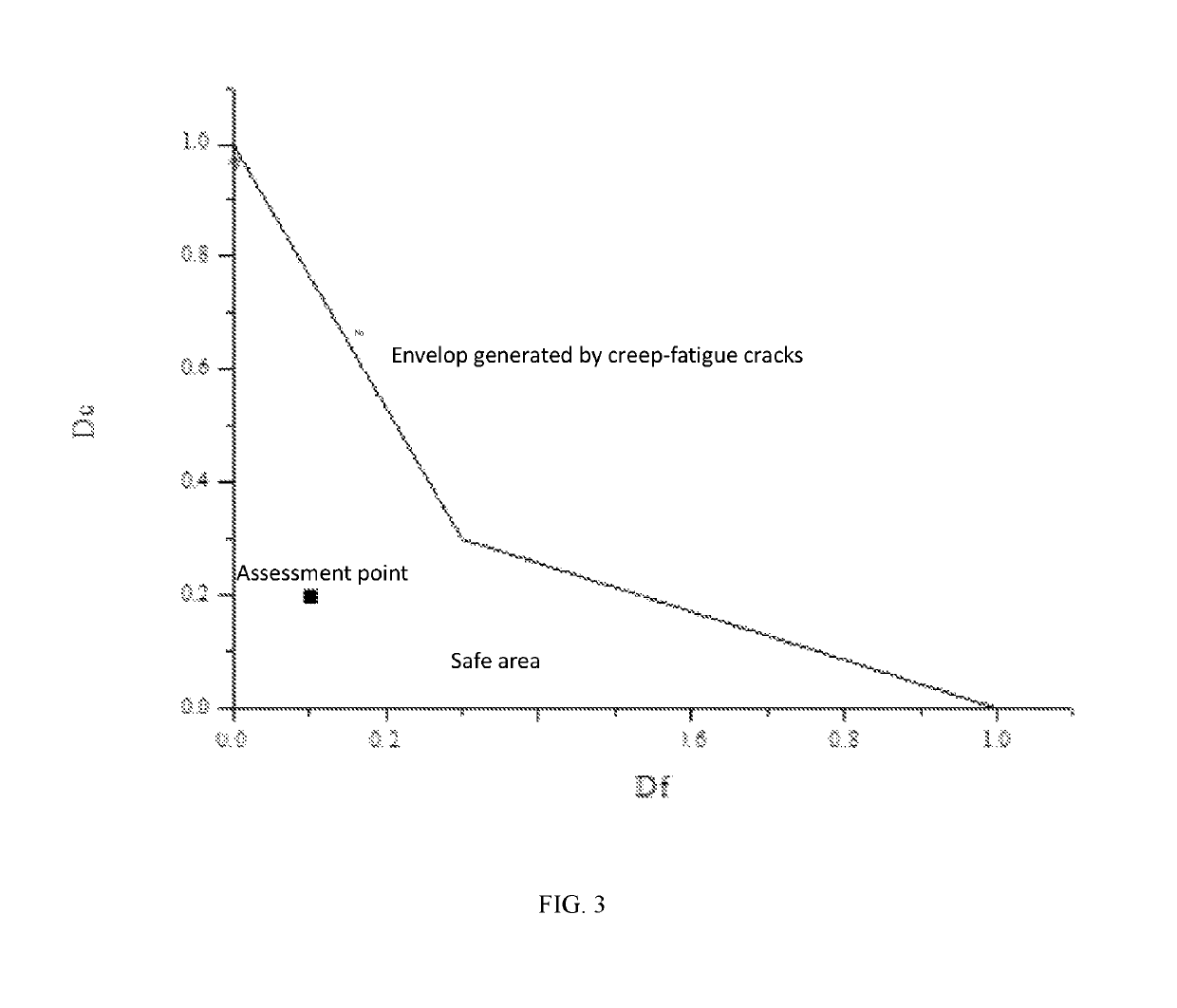Method for creep-fatigue strength of plate-fin heat exchanger
a heat exchanger and creep-fatigue technology, which is applied in the field of creep-fatigue strength can solve the problems of large footprint, low heat transfer efficiency, and difficulty in meeting the requirements of aerospace, and achieve the effect of improving the design efficiency of plate-fin heat exchangers
- Summary
- Abstract
- Description
- Claims
- Application Information
AI Technical Summary
Benefits of technology
Problems solved by technology
Method used
Image
Examples
Embodiment Construction
[0102]The preferred embodiments of this disclosure are illustrated in FIGS. 1 to 3.
[0103]The design method for creep-fatigue strength of a plate-fin heat exchanger includes the following steps:[0104]Step 1: Preliminarily design the structure of the plate-fin heat exchanger according to its design temperature and design pressure requirements and define the operating temperature, number of operating cycles and service life of the plate-fin heat exchanger.[0105]The number of operating cycles is the product of the design service life and the number of annual shutdown; the service life is the design life.[0106]As shown in FIGS. 1 to 2, the plate-fin heat exchanger core includes plates 1 and fins 2, with the fins 2 provided between every two adjacent plates 1, and is formed through superposing and brazing several plates 1 and fins 2 in a staggered fashion, thus forming several flow paths 3 between every two adjacent plates 1 and the cross section of the flow paths 3 is an isosceles trapez...
PUM
| Property | Measurement | Unit |
|---|---|---|
| creep fatigue strength | aaaaa | aaaaa |
| temperature | aaaaa | aaaaa |
| operating temperature | aaaaa | aaaaa |
Abstract
Description
Claims
Application Information
 Login to View More
Login to View More - R&D
- Intellectual Property
- Life Sciences
- Materials
- Tech Scout
- Unparalleled Data Quality
- Higher Quality Content
- 60% Fewer Hallucinations
Browse by: Latest US Patents, China's latest patents, Technical Efficacy Thesaurus, Application Domain, Technology Topic, Popular Technical Reports.
© 2025 PatSnap. All rights reserved.Legal|Privacy policy|Modern Slavery Act Transparency Statement|Sitemap|About US| Contact US: help@patsnap.com


